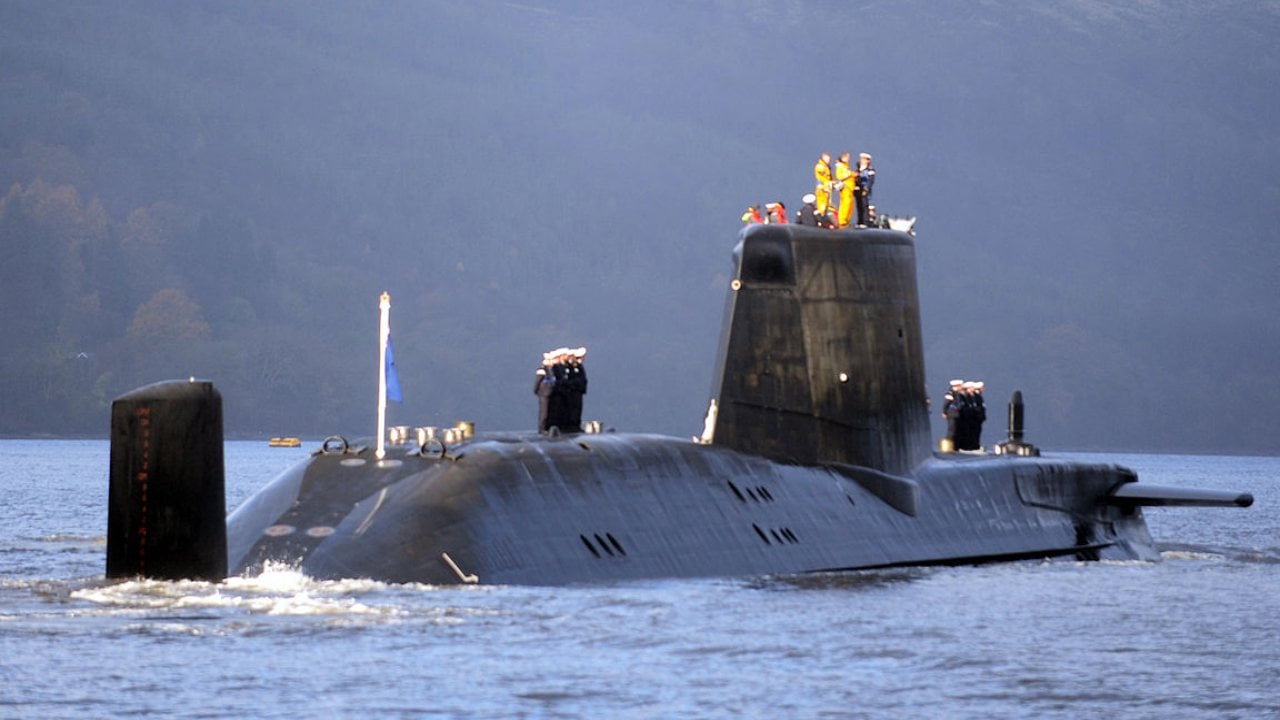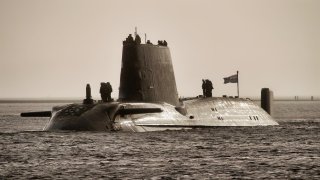Agamemnon: The Royal Navy's New Astute-Class Submarine Is Quiet as a Dolphin
The Royal Navy has introduced its sixth vessel named HMS Agamemnon, an Astute-class submarine, continuing a historic lineage that dates back to the Trojan War's legendary Greek king. Named during a ceremony at BAE Systems in Barrow-in-Furness, this state-of-the-art nuclear-powered submarine is set to be launched later this year.
Summary: The Royal Navy has introduced its sixth vessel named HMS Agamemnon, an Astute-class submarine, continuing a historic lineage that dates back to the Trojan War's legendary Greek king. Named during a ceremony at BAE Systems in Barrow-in-Furness, this state-of-the-art nuclear-powered submarine is set to be launched later this year.
-It represents a significant technological leap with features like advanced anti-acoustic tiles and video technology replacing traditional periscopes, enhancing its stealth and surveillance capabilities.
-The submarine, which can carry a wide range of armaments including torpedoes and cruise missiles, underscores the UK’s commitment to maintaining a cutting-edge naval force. HMS Agamemnon's name holds historical significance, recalling figures of classical antiquity revered in Royal Navy tradition.
Astute-Class Submarine HMS Agamemnon Joins Royal Navy Fleet
Five Royal Navy warships have been named HMS Agamemnon after the legendary Greek king who commanded the Achaens during the Trojan War. This has included the 64-gun third-rate ship-of-the-line that took part in the Battle of Trafalgar in 1805; and the Lord Nelson-class pre-dreadnought battleship that saw service in the Dardanelles Campaign of the First World War.
This month a sixth Royal Navy vessel officially became the latest HMS Agamemnon – the sixth of a planned seven Royal Navy's Astute-class submarines. The boat was named at a ceremony at BAE Systems' Submarines site in Barrow-in-Furness, Cumbria.
The fast attack submarine will be launched later this year, ahead of being commissioned into the UK's senior service.
"This is a key milestone for Agamemnon and the UK nuclear submarine programme, and contributes to the Government's Defence Nuclear Enterprise Command Paper, which underpinned the importance of our business and Barrow in delivering this national endeavour," said Steve Timms, managing director for BAE Systems' submarines division. "The Astute-class submarines are a vital component of our nation’s defence capabilities and we are fully focused on completing the remainder of Agamemnon's programme so she can join her sister submarines in service with the Royal Navy."
Astute-Class: High-Tech Boats
The Royal Navy's Astute class boats are the first nuclear-powered submarines in the world to be designed in a 3D computer-aided environment. Moreover, they have been outfitted with many technological firsts, including not having an optical periscope. Instead, high-specification video technology has been employed, which enables the crew to scan the horizon and get a 360-degree view to address any potential threat.
In addition, unlike other nuclear-powered submarines, the Astute-class was developed to utilize state-of-the-art anti-acoustic tiles. Each hull is fitted with more than 39,000 acoustic tiles that mask the vessel's sonar signature and allow the submarines to glide through the water almost silently. The little noise the boats give off has actually been compared to that of a "baby dolphin."
Each of the Astute-class boats is roughly 97 meters (318 feet) in length and has a crew of around 100 sailors, with a capacity for 109. The attack submarines further have stowage for 38 weapons and typically carry a mix of Spearfish heavy torpedoes and Tomahawk Block IV cruise missiles, which are capable of hitting a target to within a few meters, to a range of 1,000 miles (1,600 km). The submarines' countermeasures suite includes decoys and electronic support measures (ESM).
The boats are also fitted with a dry deck shelter, which allows Special Forces – such as the Royal Marine Commandos or Royal Navy Special Boat Service (SBS) operators to deploy whilst the submarine is submerged.
The Greek Connection
Numerous Royal Navy ships throughout history have been named after figures and creatures from ancient Greek mythology.
"The Royal Navy has always respected the figures of the Trojan War, possibly because, for the Greeks, it was a seaborne war: or perhaps because of the exaggerated respect that the mostly unlettered British naval officers of the 18th and 19th centuries had for classical learning," wrote Lewis Page, former Royal Navy officer, for The Telegraph.

Page added that the name holds a special place in the history of the Royal Navy.
"An HMS Agamemnon was present at British battles from the Saints, Copenhagen and Trafalgar to the Dardanelles and the minewarfare campaigns of the Second World War," Page explained. "In a historical echo reverberating particularly loudly today, an HMS Agamemnon was there when Britain fought Russia in the Crimea. When the ship's company of the latest Agamemnon raise their glasses to the Immortal Memory of Lord Nelson on Trafalgar Night, they will no doubt recall with pride that Admiral Nelson had been captain of the first HMS Agamemnon.
Author Experience and Expertise: Peter Suciu
Peter Suciu is a Michigan-based writer. He has contributed to more than four dozen magazines, newspapers, and websites with over 3,200 published pieces over a twenty-year career in journalism. He regularly writes about military hardware, firearms history, cybersecurity, politics, and international affairs. Peter is also a Contributing Writer for Forbes and Clearance Jobs. You can follow him on Twitter: @PeterSuciu.
You can email the author: [email protected].


